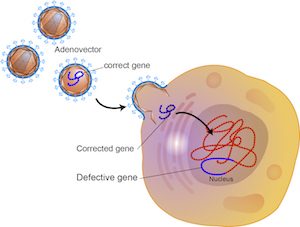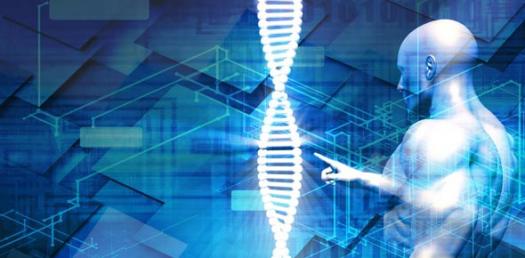DNA, the genetic fingerprint of all the organism on earth, defines the traits and behavioral basis of them, even before the birth.
Structure of DNA was proposed by Watson and Crick in 1953. DNA is made of a pentose sugar, nitrogenous bases and a phosphate group. With the researches being developed, the basis of genetics was revealed with the structure. Sugar and the phosphate group make the ladder slide(identified as sugar -phosphate backbone).
Nitrogenous bases present in DNA are Adenine(A), Guanine(G), Cytosine(C) and Thymine(T) .
The nitrogenous bases that extend at right angles from the sugar-phosphate backbone, possess a specific order. The consequent triplets of the bases is called a “codon”. Each codon specifies the production of each amino acids(proteins are polymers of amino acids). Collection of these codons is called a genetic code.
The order(genetic code) determines which protein to be produced within a particular cell, which in turn determines the physiological traits of the organism.
The researches on DNA opened out gateways for a variety of sciences, of which the recombinant DNA technology occupies a major role.
It is the basic technology of adding a part of the DNA fragment(ie; a particular gene) from one organism into another. The technique has enabled to produce the desired characteristic found in the first organism to be incorporated in to the second organism as well.
Currently, this technology has been used by most of the fields such as medicine, agriculture etc,
One major example is found in medicine in the treatment of Diabetes. Diabetes, is the condition where a body could not produce sufficient amount of insulin.
Insulin is essential in signalling cells to take up glucose into them and produce the energy needed by the body and also signals liver cells to convert extra glucose in the blood to glycogen and store them.
Absence of enough Insulin, results in increased levels of blood glucose, and results in Diabetes condition.
But now, the insulin injections are given to patients suffering from Diabetes and this larger amount of producing Insulin is sustained by the recombinant DNA technology, where the genes producing insulin hormone is inserted into the plasmid(genome of bacterium or yeast cells) and the bacterial population is cultivated in large amount. The resulting population, that s inserted with the insulin producing gene, produces insulin in large quantity which is then injected to those in need to survive Diabetes condition.
The technology is used in other fields too in developing the desired characters.
But, with the wide growth in this technology, there are other concerns that arise too.
The major concern is that whether we will be able to handle the GMOs(genetically modified organisms) without intervening the natural population of the ecosystem? The uncontrolled spread of these transgenic organism can disturb the natural balance. Especially, when the plant species with genes resistant to pesticides accidentally spreads to out of test controlled areas, the population of the particular plant species can overtake the others and disturb the food chain and thereby the disturb in the natural balance too.
“The germline therapy” is a technology that uses only sperms and eggs when transferring genes.
It can pass down only the desired traits to the next generation. As its being so useful in rectifying the genetically determining diseases to a certain extent, its predicted to be misused for predetermining the traits of the fetus.

The basic idea behind the germline therapy is to replace the misbehaving or unwanted genes in the sperm or an egg with the proper gene; the gene with the desired function. For example, if one of the parent’s family history reports a genetic disorder, such a therapy is conducted either in the sperm or the egg and then again implanted within the parent. The implications in inserting the rectified genome back into the reproductive cell, is overcome by the use of vector viruses, which are engineered specifically to insert the edited genome in to the body. Currently there are ‘only a handful of instances’ where it had been tried on a human embryo, due to the ethical issues and the legal restrictions. Still, such a result of Recombinant DNA technology could bring both good and bad in to the so called “GENETICALLY ENGINEERED FUTURE GENERATION”
Coming out from the germline therapy, there are other reported instances where such genetic disorders of human are cured. One such remarkable case is the cure of Sickel cell anaemia of a boy in France in, March 2017. His stem cells were removed and were inserted with genes that prevent his cells becoming sickle celled.
As such, the technology has opened another new pathway for humans that can be both cultivated for good cause or could led to the negative pathway.
Image Courtesy:
https://study.com/academy/lesson/germline-therapy-definition-procedure-ethics.html
https://media.proprofs.com/images/QM/user_images/1826446/1487312978.jpg

